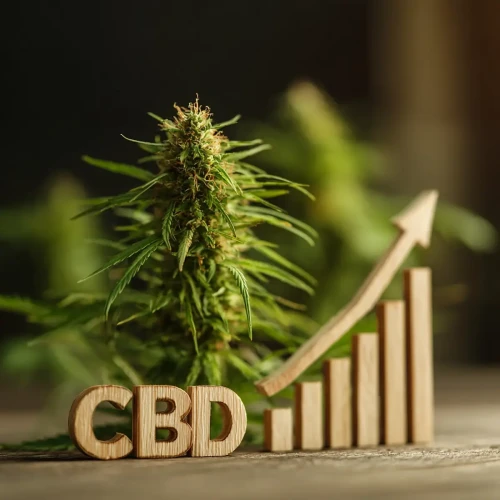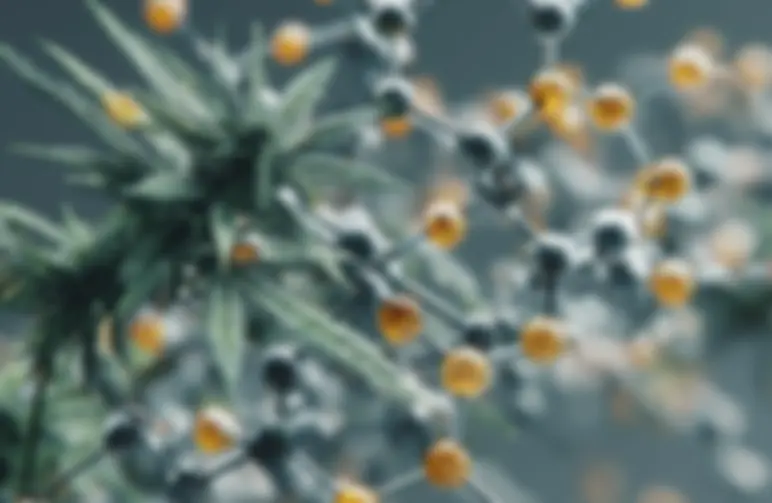Any experienced grower will tell you that nitrogen is a key nutrient for cannabis. But knowing how nitrogen affects the plant's metabolism, especially when it's under stress, can make your grow go from good to great.
The International Journal of Molecular Sciences recently published a review called "Impact of Nitrogen Nutrition on Cannabis sativa" that goes into great detail about the science. This is what you need to know from that study, broken down into easy-to-understand, useful information.
Why This Study Is Important
The researchers studied how the amount of nitrogen in the soil affects everything from photosynthesis and stem growth to the production of cannabinoids. They also looked at gene expression data to find out how cannabis plants react to different levels of nitrogen and environmental stressors like drought or salt.
This is important because nitrogen is at the center of two big things:
- Main metabolism: growth, leaf growth, and photosynthesis
- Secondary metabolism: cannabinoids, flavonoids, alkaloids, and plant defense compounds
If you mess with nitrogen, it changes not only the size of the plants but also their strength, resin production, and ability to handle stress.
Important Things to Know for Cannabis Growers
1. Nitrogen Efficiency Changes with the Environment
Cannabis can use nitrogen very well, especially in places that aren't very dry. But when there is too much nitrogen in the soil, the plant's Nitrogen Resorption Efficiency (NRE)—how well it recycles nitrogen from older tissues—goes down.
Tip: If you live in an area with low rainfall and are growing outside, don't overdo the nitrogen. Check your soil and let the plant do some of the work naturally.
2. More Nitrogen Doesn’t Always Mean More Yield
In a field trial in Canada, adding nitrogen (200 kg/ha) increased seed yield but didn’t improve fiber quality or seed oil content. In fact, too much nitrogen weakened fibers by reducing lignin and cellulose.
Tip: If you're growing for both fiber and seed, find a balance. Too much nitrogen can make plants floppy and less fiber-rich.
3. Nitrogen Affects How Cannabinoids Are Made
- THC in top leaves dropped by 19%
- CBG in flowers increased by 71%
- CBN levels also dropped
Interpretation: Nitrogen can shift the plant’s focus away from THC production. It may rewire metabolic priorities under certain conditions.
Tip: Don’t overfeed if you're after high THC. Dial back nitrogen during flower to encourage more cannabinoid-rich growth.


How Cannabis Deals with Stress and Nitrogen
The study examined how cannabis genes respond to drought and salt stress. Key findings:
- Proline synthesis genes (like P5CS) get activated during drought. Proline helps retain water.
- Nitrate transport genes shut down during drought, signaling the plant is recycling nutrients internally.
- Transcription factors like MYB and WRKY are turned on to manage stress and nutrient use.
Why this matters: Breeders can create stress-resistant strains by targeting these genes. Growers can also time their nutrient applications better under stress conditions.
Genetic and Breeding Potential
The study recommends future breeding efforts should focus on:
- Varieties that thrive with low nitrogen or water
- Genes related to nitrate transport, proline production, and polyamine metabolism
- Exploring polyploidy to enhance nutrient uptake and cannabinoid output
Cannabinoids and Nitrogen: A Molecular Perspective
Many cannabinoid precursors depend on nitrogen. For example:
- Alkaloids like cannabisativine are nitrogen-based
- Nitrogen affects flavonoids and lignanamides
Bottom line: Adjusting nitrogen during flowering might help steer the plant toward producing specific secondary metabolites.
Study-Based Practical Advice for Growers
- During Veg: Use nitrogen to support leaf and photosynthesis development. Watch for signs of deficiency (light green leaves, slow growth). Don’t overdo it, or you’ll delay flowering.
- During Flower: Gradually reduce nitrogen. Prioritize potassium and phosphorus for resin and terpene production. Avoid high-nitrogen feeds late in flower to preserve cannabinoid potency and smooth smoke quality.
Future Directions: Research and the Grow Room
This review mainly covers fiber and dual-purpose hemp. We need similar data from high-THC and CBD cultivars under controlled nitrogen environments.
Until then, feed smart, watch closely, and adjust based on how your plants behave—not just what the calendar says.
Last Thoughts
This study confirms what skilled growers already suspect: nitrogen is a double-edged sword. It fuels growth, but too much can reduce cannabinoid content and stress resilience. The key is balance.
You can download the original study or test your soil’s nitrogen before your next grow to take full advantage of these findings.





